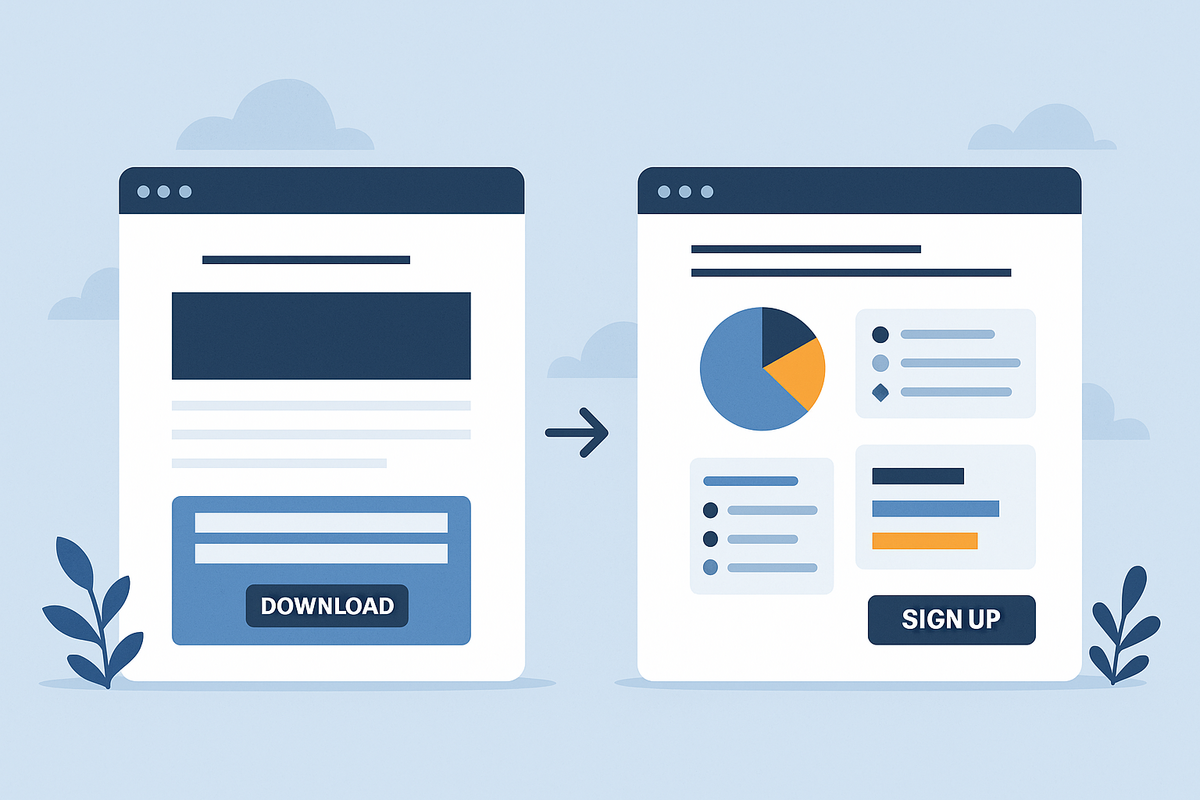The Shift in B2B Marketing
For years, marketers have relied on landing pages to capture leads. The formula was simple: publish a whitepaper, gate it behind a form, and drive traffic to a landing page. But in 2025, this model is showing cracks. Buyers are more skeptical about gated content, attention spans are shorter, and static landing pages often fail to convert at scale.
That’s where interactive whitepaper portals step in. Instead of being just another download page, they transform content into a conversion hub—an immersive, value-rich environment where education, engagement, and lead generation happen all at once.
Why Traditional Landing Pages Are Losing Steam
Landing pages worked well in the early days of digital marketing, but today’s B2B buyers expect more than a form and a PDF. Here’s why the old model struggles:
-
High Drop-Off Rates: Many users abandon gated forms before downloading.
-
One-Dimensional Experience: Landing pages focus on conversion, not engagement.
-
No Ongoing Value: Once the whitepaper is downloaded, the journey ends.
-
Weak Data Signals: Marketers only know the form was filled—not what content resonated.
The result? Missed opportunities for meaningful interactions and weaker sales insights.
Portals: Turning Whitepapers into Conversion Hubs
Interactive whitepaper portals flip the script. Instead of a single-page gate, they create a multi-layered experience where the whitepaper itself acts as the landing page—and more.
1. Content + Conversion in One Place
With portals, the whitepaper is hosted online, complete with embedded CTAs, related resources, and conversion points. Readers engage with content and can take the next step—book a demo, download another guide, or chat with sales—without leaving the experience.
2. Always-On Engagement
Unlike PDFs, portals keep the conversation going. Visitors can return anytime, interact with new features, and re-engage with updated insights.
3. Data-Rich Interactions
Every click, scroll, and interaction is tracked. Instead of a binary “downloaded or not,” marketers get a complete picture of buyer behavior—what sections readers spent the most time on, which CTAs were clicked, and where drop-offs happened.
4. Personalized Journeys
Portals can dynamically adapt content based on industry, role, or user input. For example, a CIO may see content tailored to cost savings, while a marketing manager views engagement-focused case studies.
From Gate to Growth: How Portals Drive Conversions
Unlike traditional landing pages that aim for a single form-fill, portals provide multiple conversion paths, increasing the likelihood of lead capture.
Examples include:
-
Quizzes & Polls: Capture data while offering value.
-
ROI Calculators: Show prospects exactly what they stand to gain.
-
Embedded CTAs: Sprinkle demo requests, trial signups, or newsletter opt-ins throughout the content.
-
Chatbots & Interactive Support: Guide readers in real time to the next step.
This turns a passive asset into an active conversion ecosystem.
SEO and Discoverability Benefits
Another advantage of portals is their search visibility. Unlike gated PDFs, portal-based whitepapers can be optimized for SEO, ensuring they attract organic traffic over time. Features like structured metadata, responsive design, and internal linking make them discoverable, indexable, and rank-worthy—all while driving conversions.
Case Example: From Static to Conversion Hub
A B2B SaaS company publishing a PDF whitepaper on “AI in Customer Success” once relied on a landing page with a simple form. Conversion rates hovered around 12%.
After shifting to an interactive portal with embedded CTAs, a calculator, and a chatbot, the same asset achieved:
-
3x engagement time compared to the PDF.
-
35% higher conversion rates across multiple CTA points.
-
Richer sales insights, including which features readers valued most.
The content didn’t just capture leads—it actively nurtured and qualified them.
Conclusion: The Future of Lead Generation
The days of treating whitepapers as static content assets gated behind landing pages are fading. In their place, interactive portals are emerging as the new conversion hubs—blending thought leadership, engagement, and lead generation into a single experience.
For B2B marketers, this shift means less friction, more insights, and higher-quality leads. If your goal is to move beyond form-fills and create true buyer journeys, portals are not just the future—they’re the now.
You May Also Like: How to Choose the Right Content Syndication Partner (Without Burning Budget)

